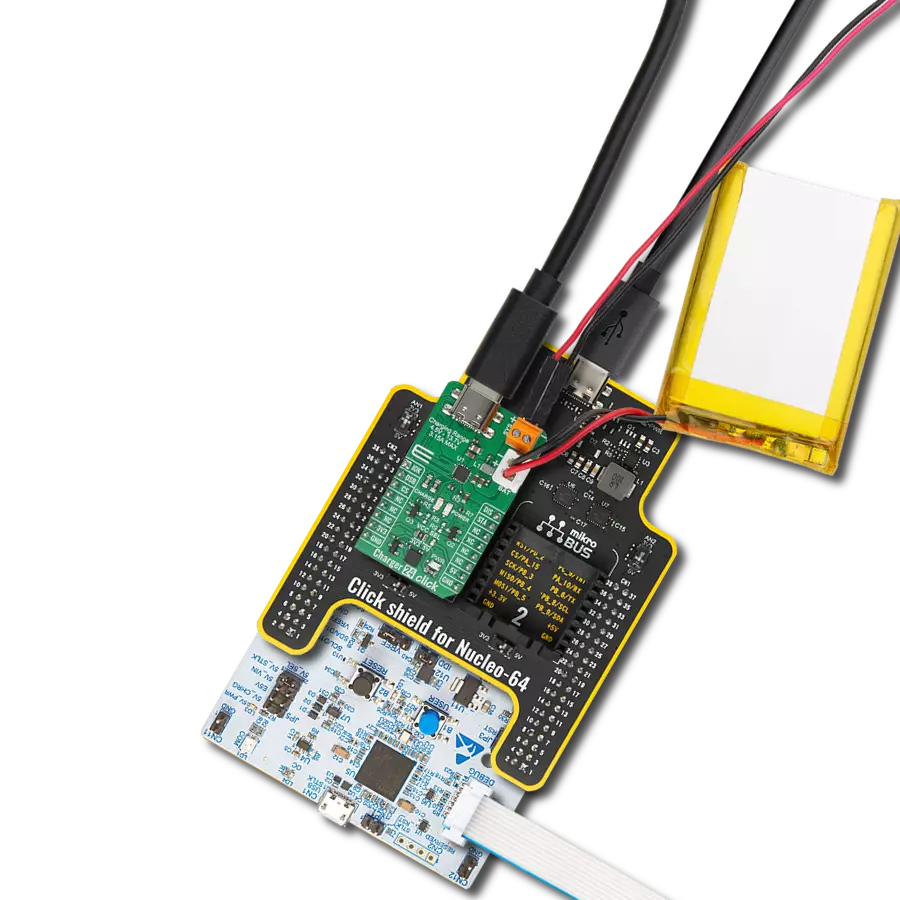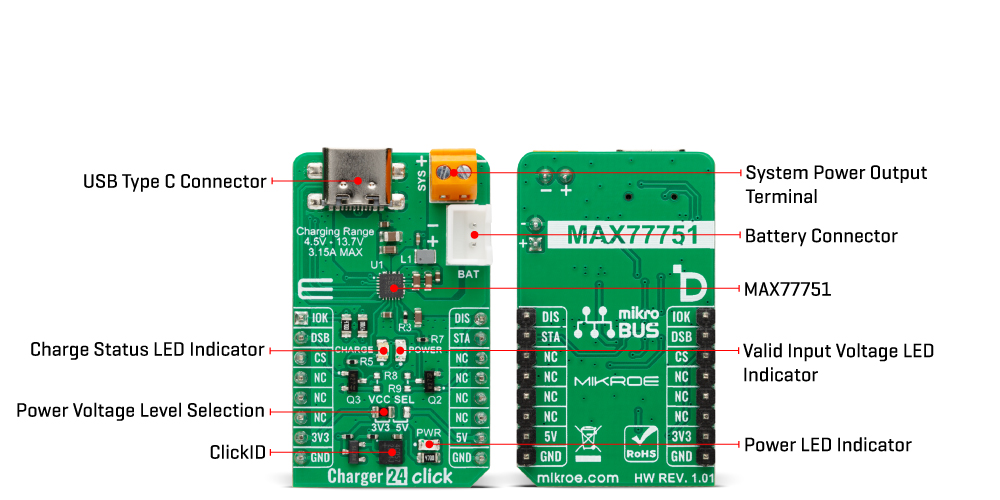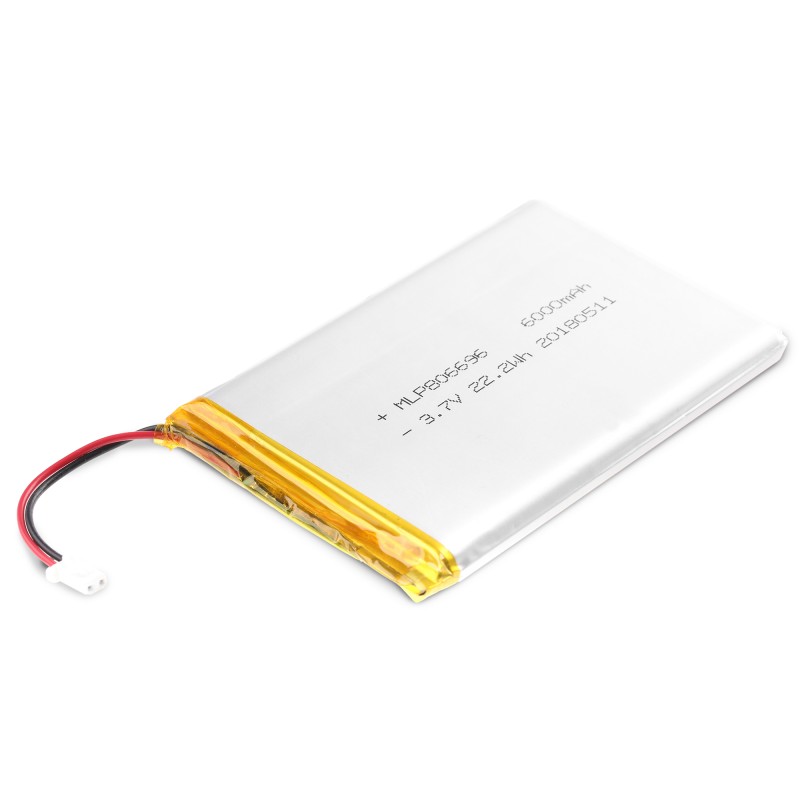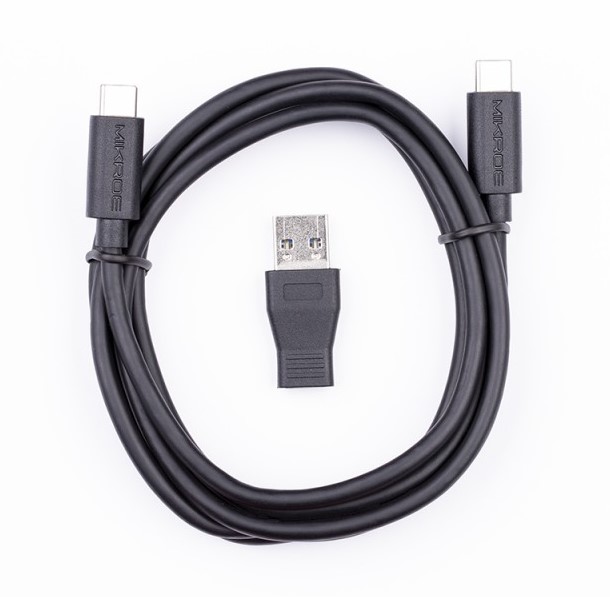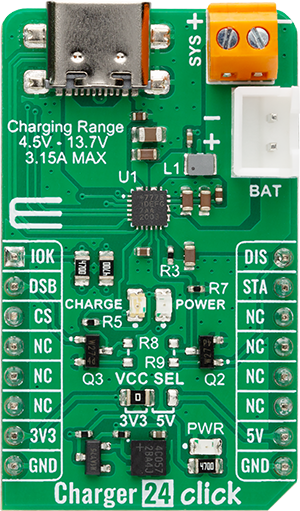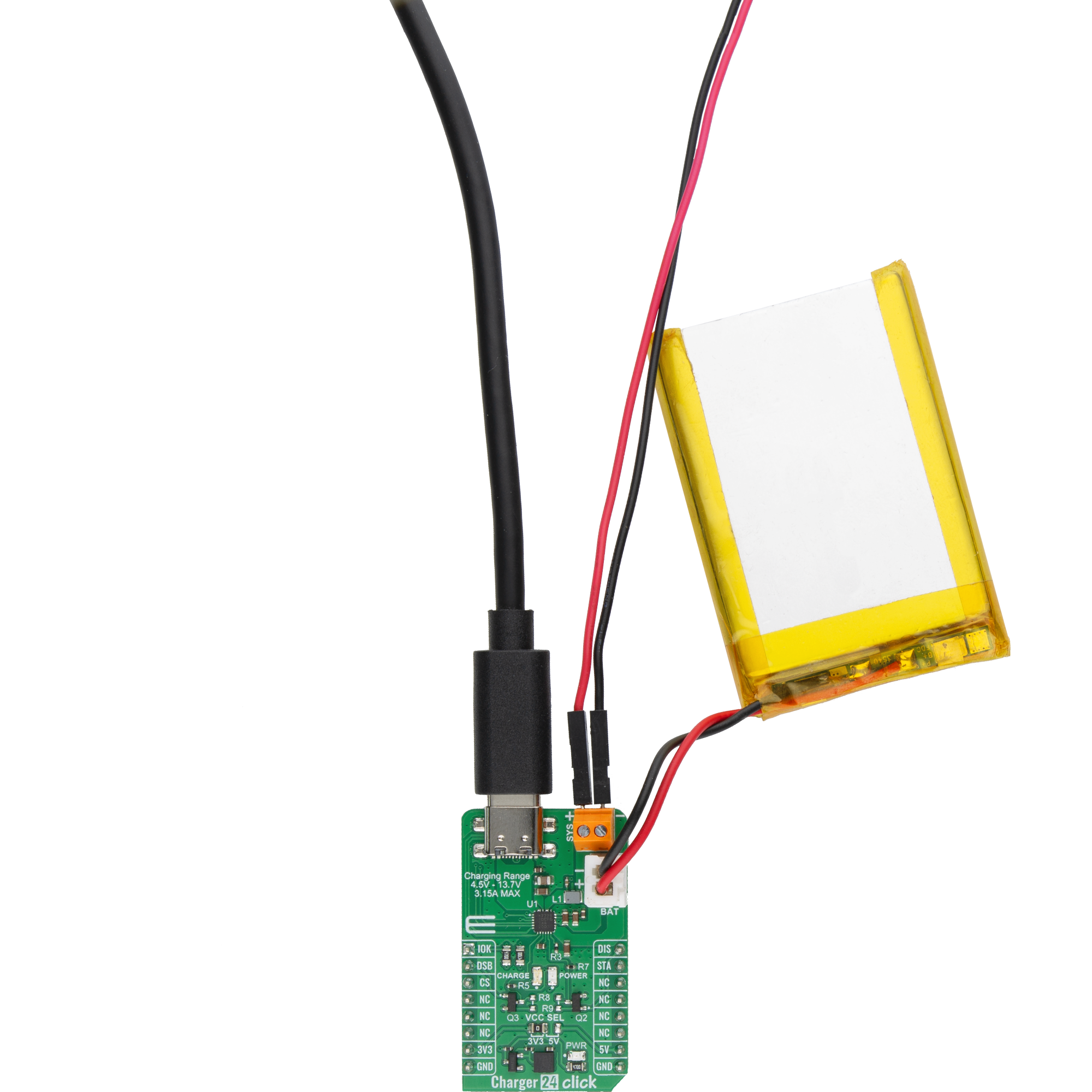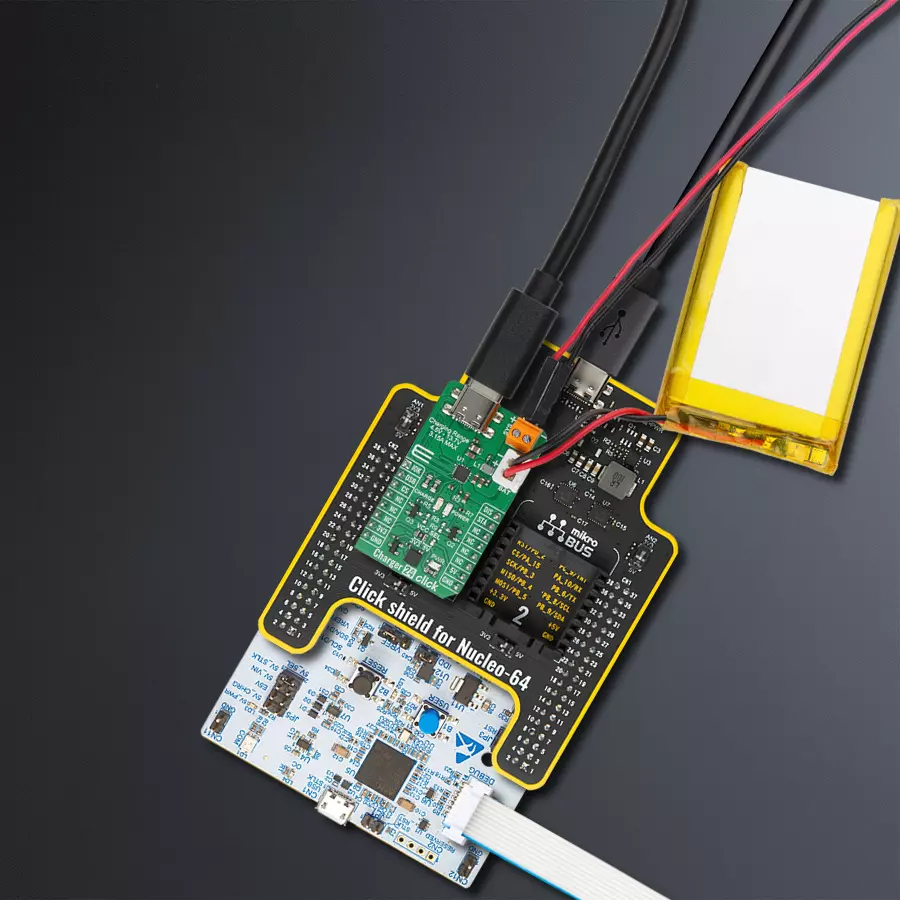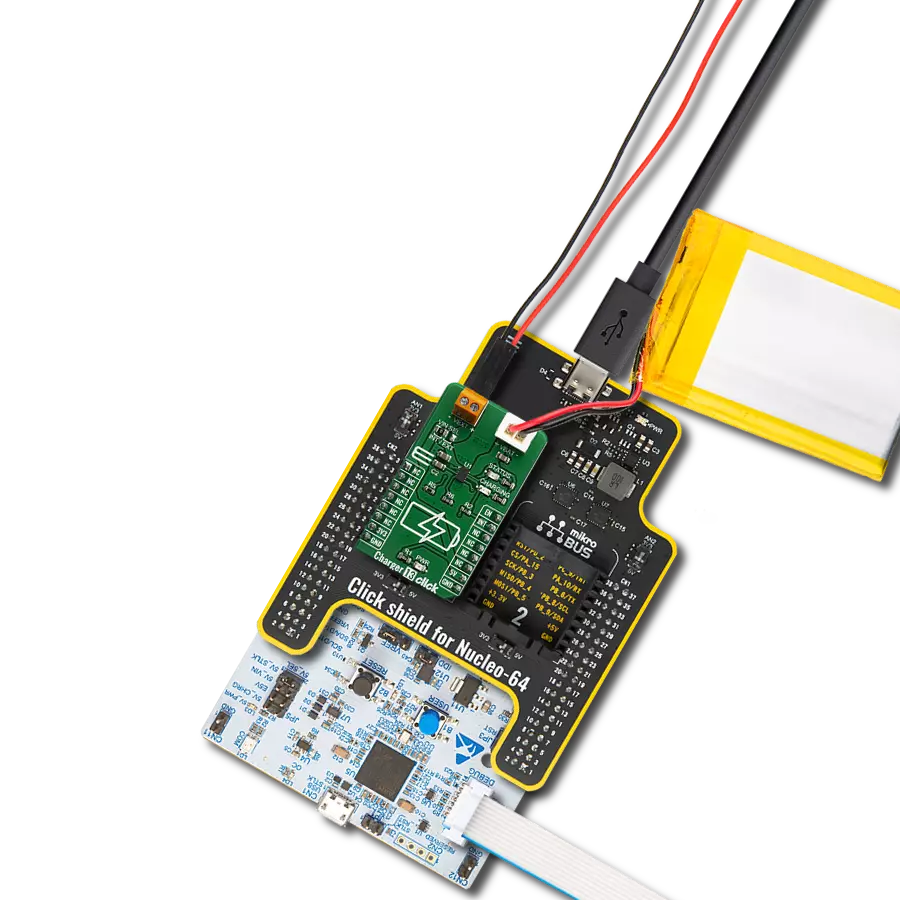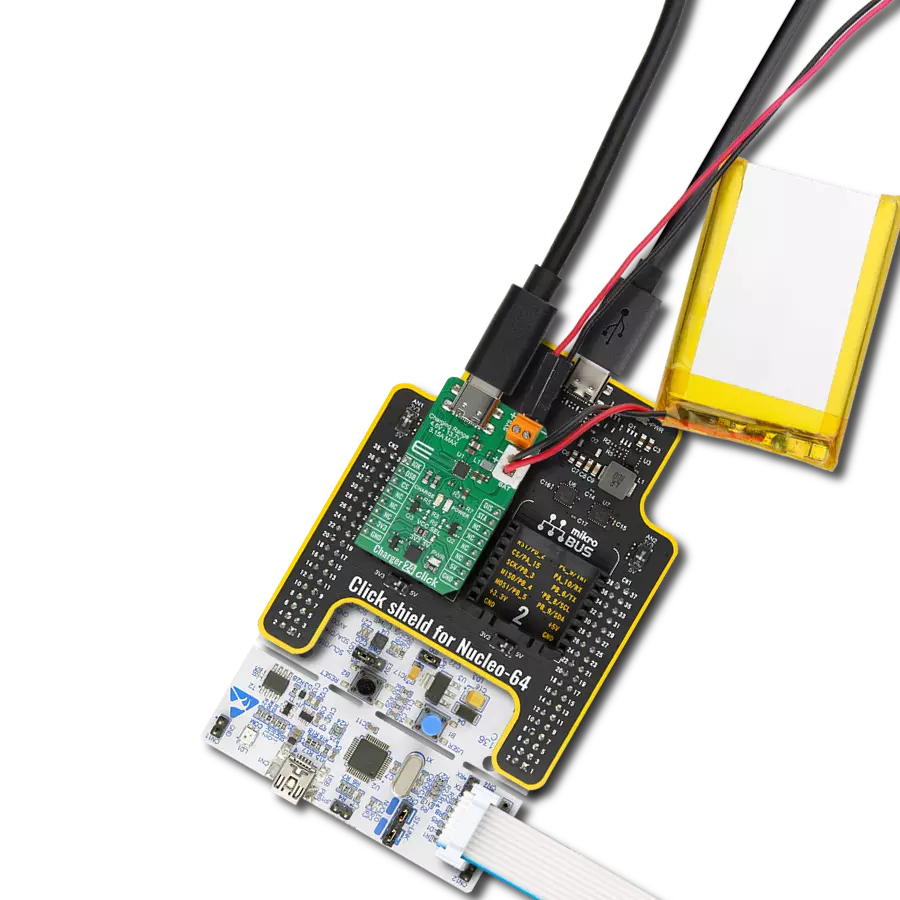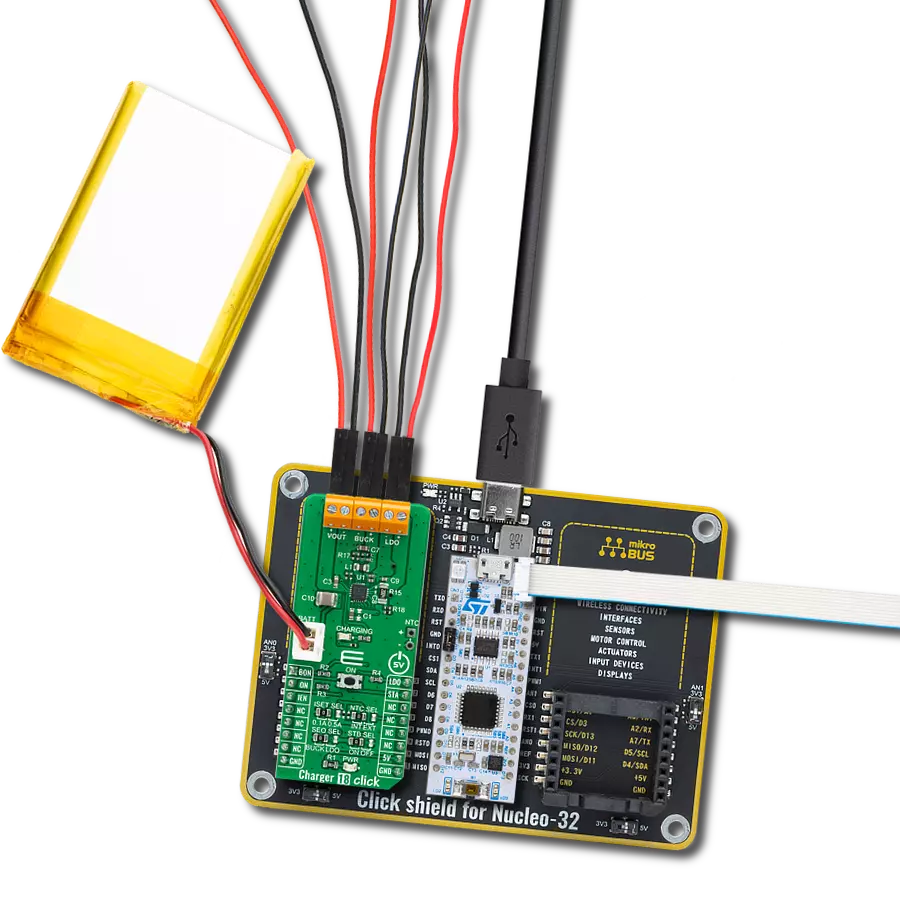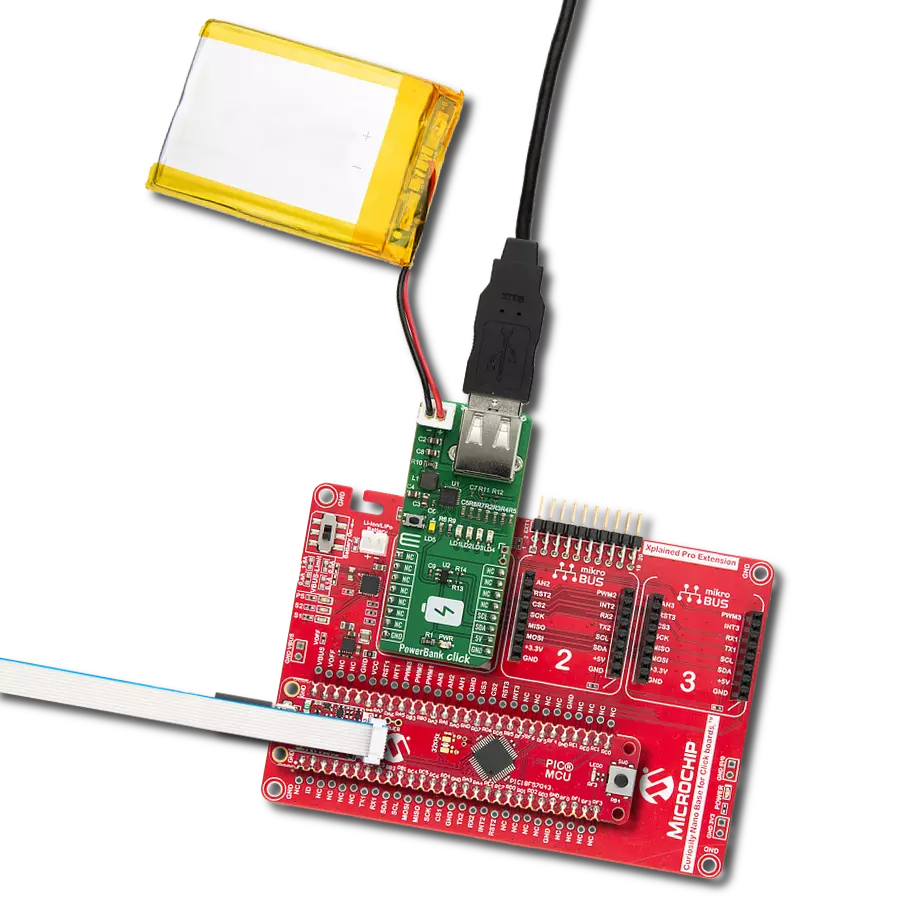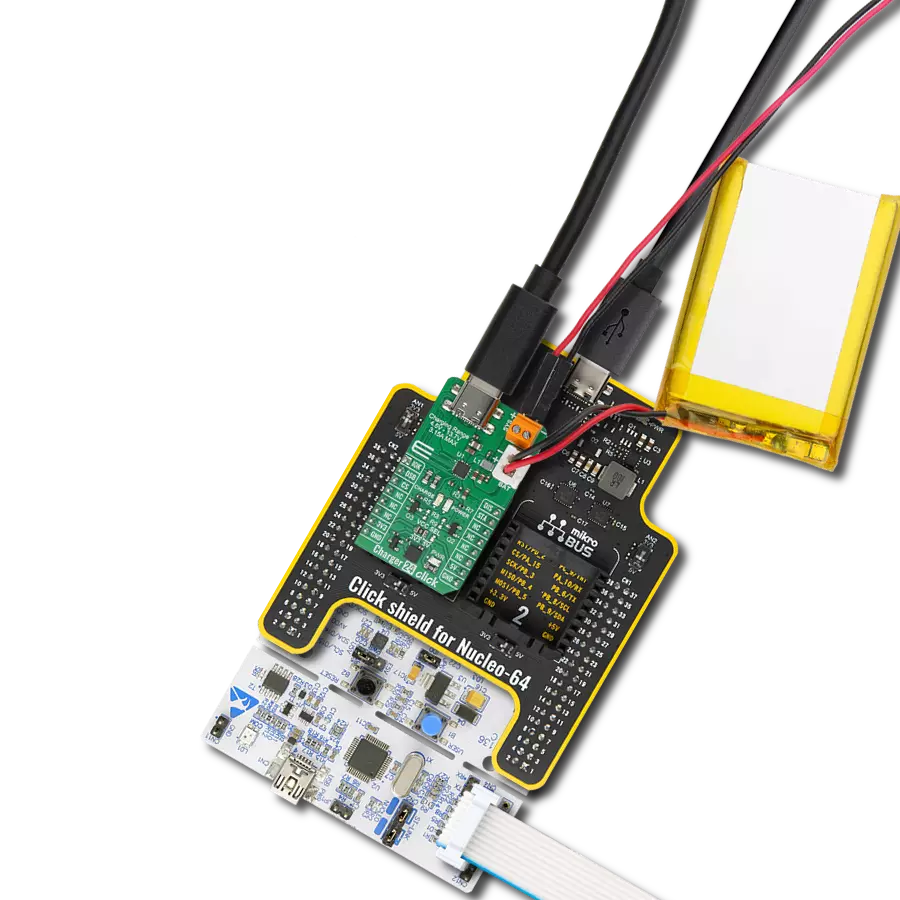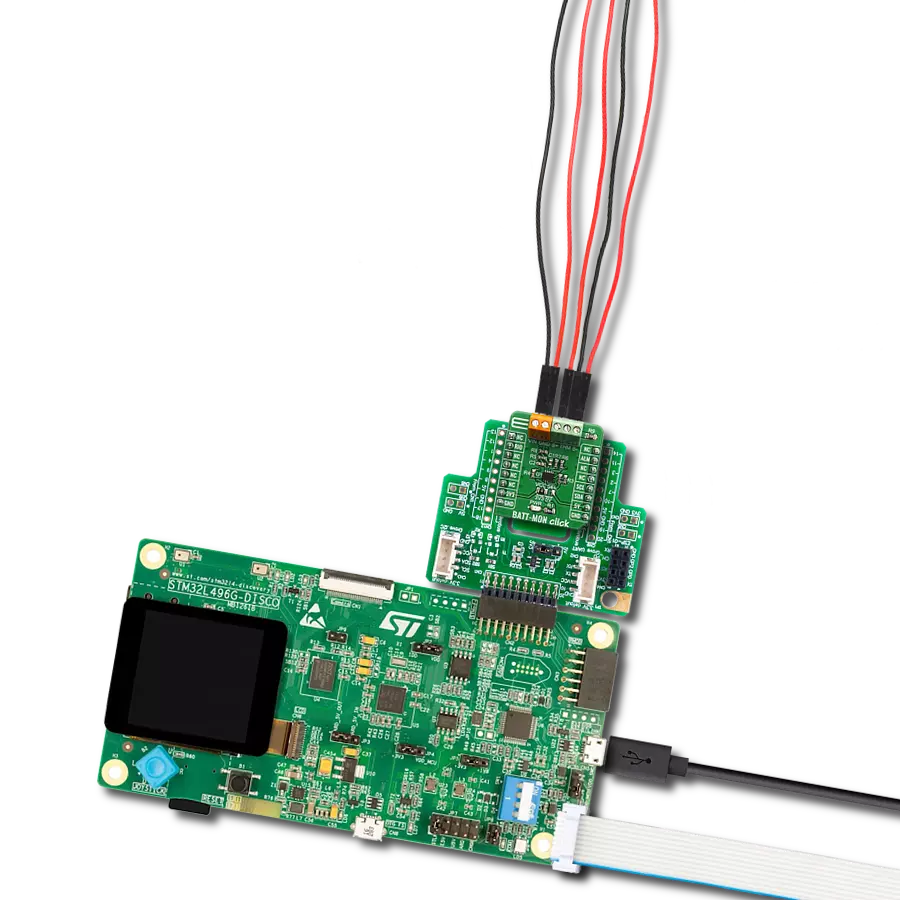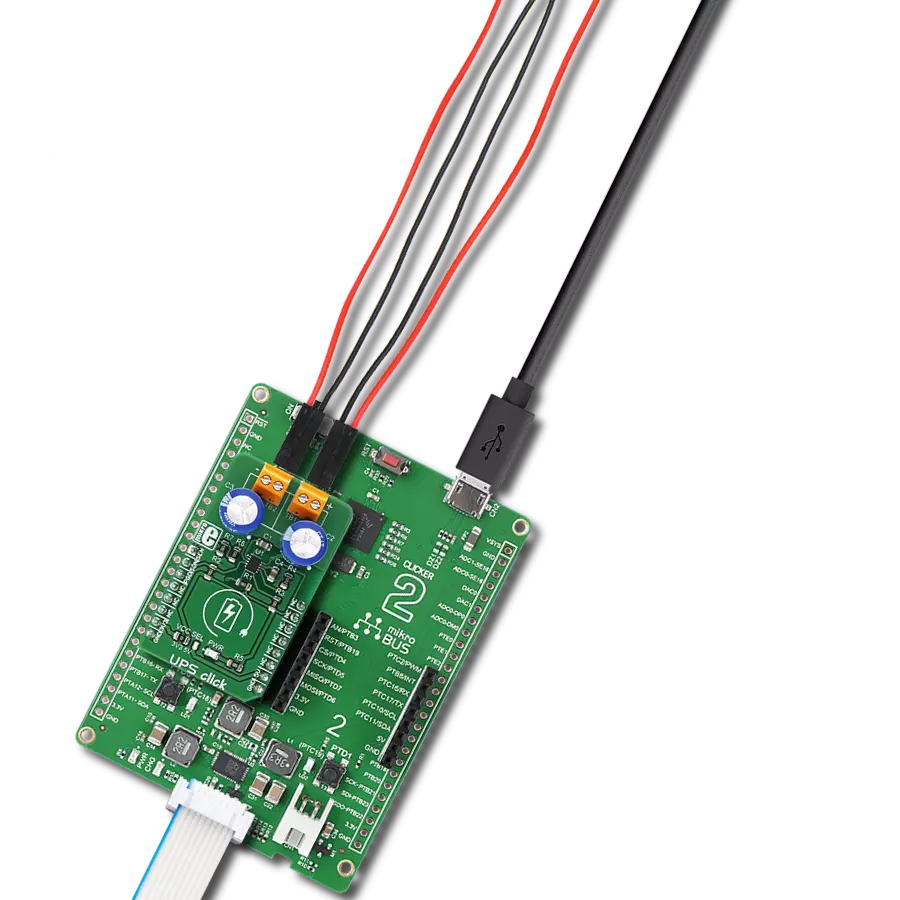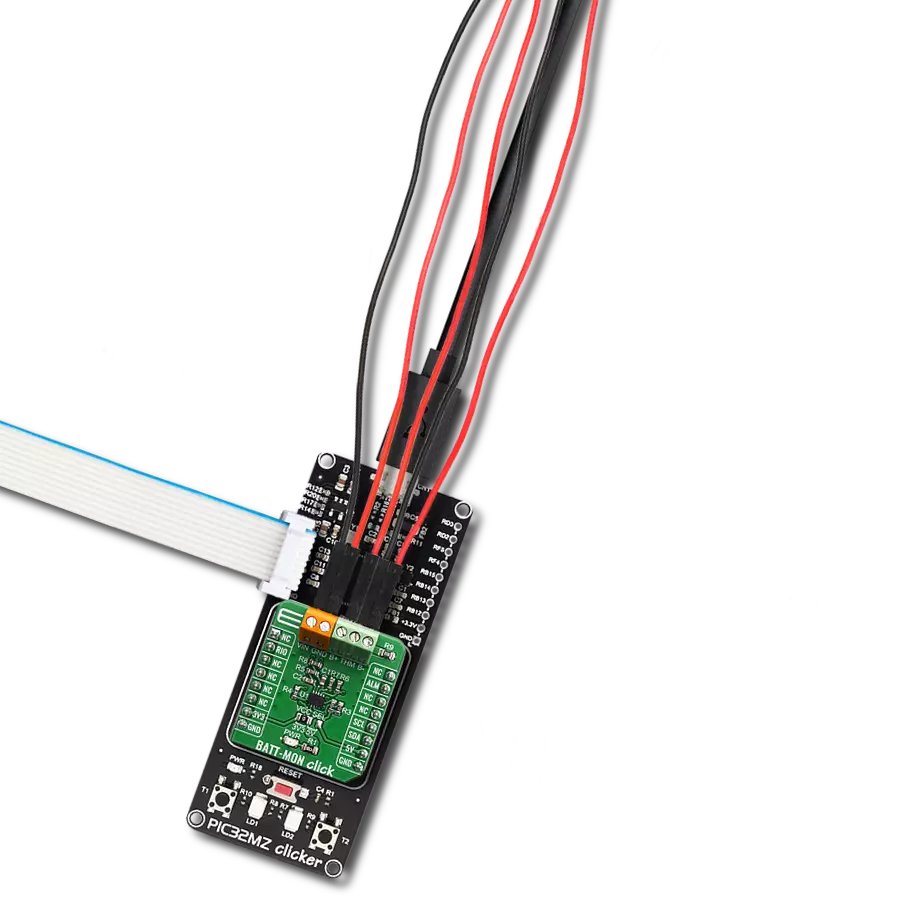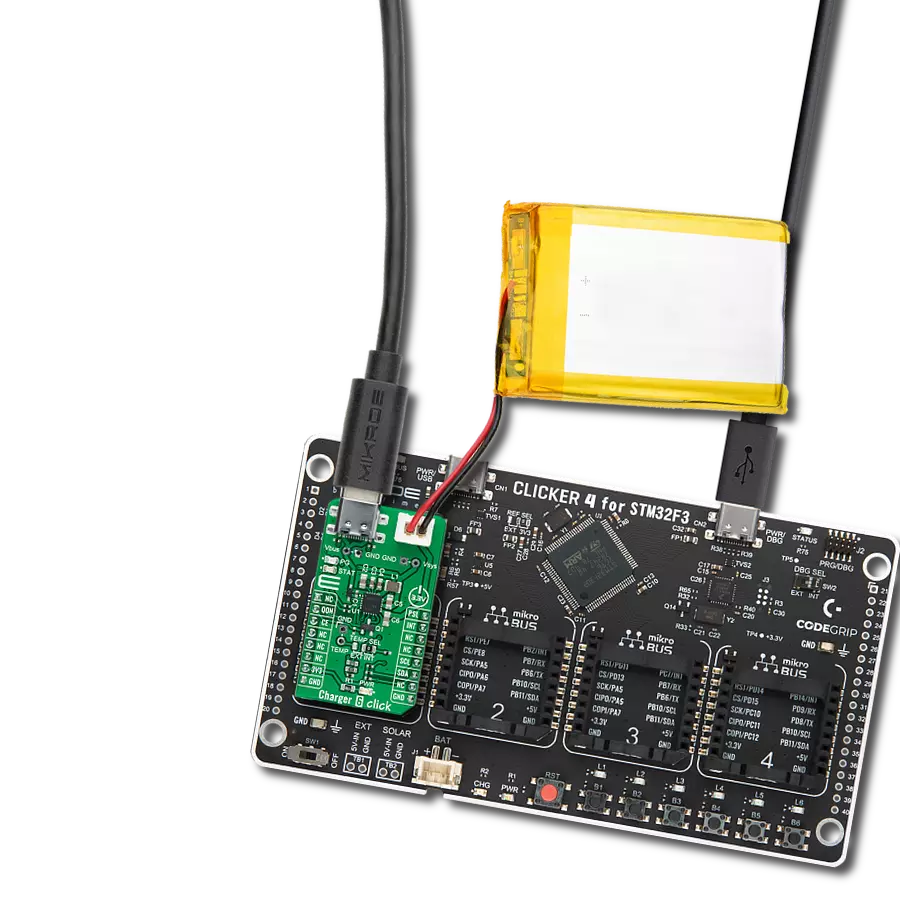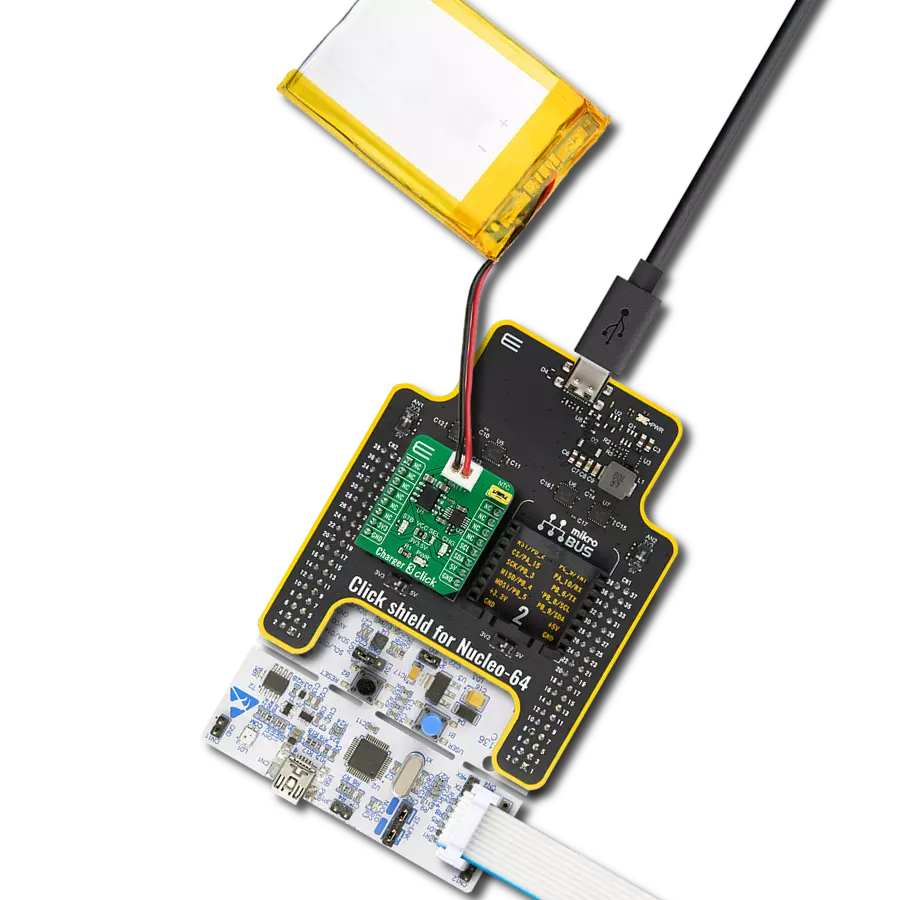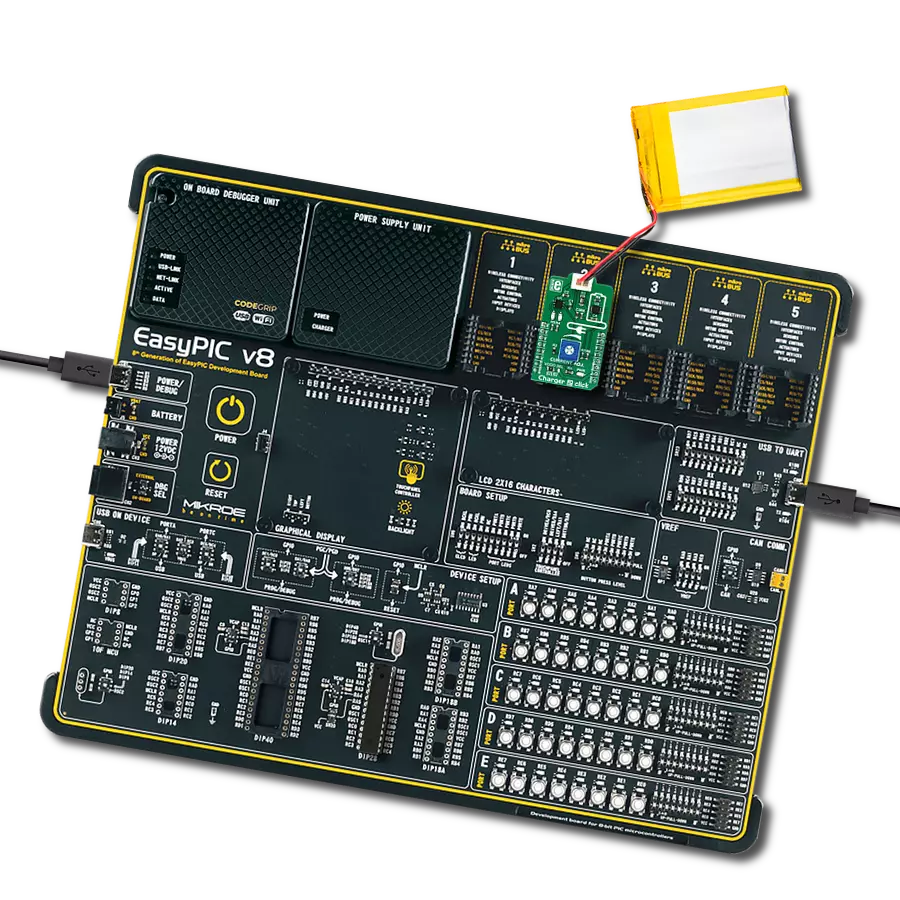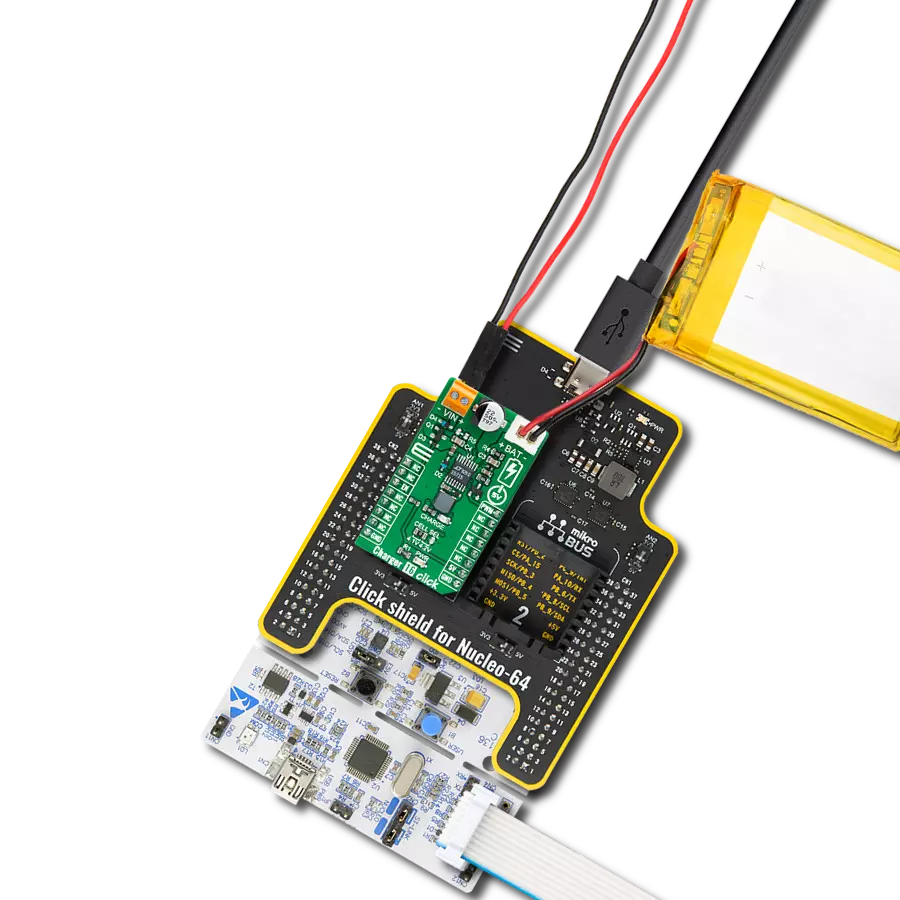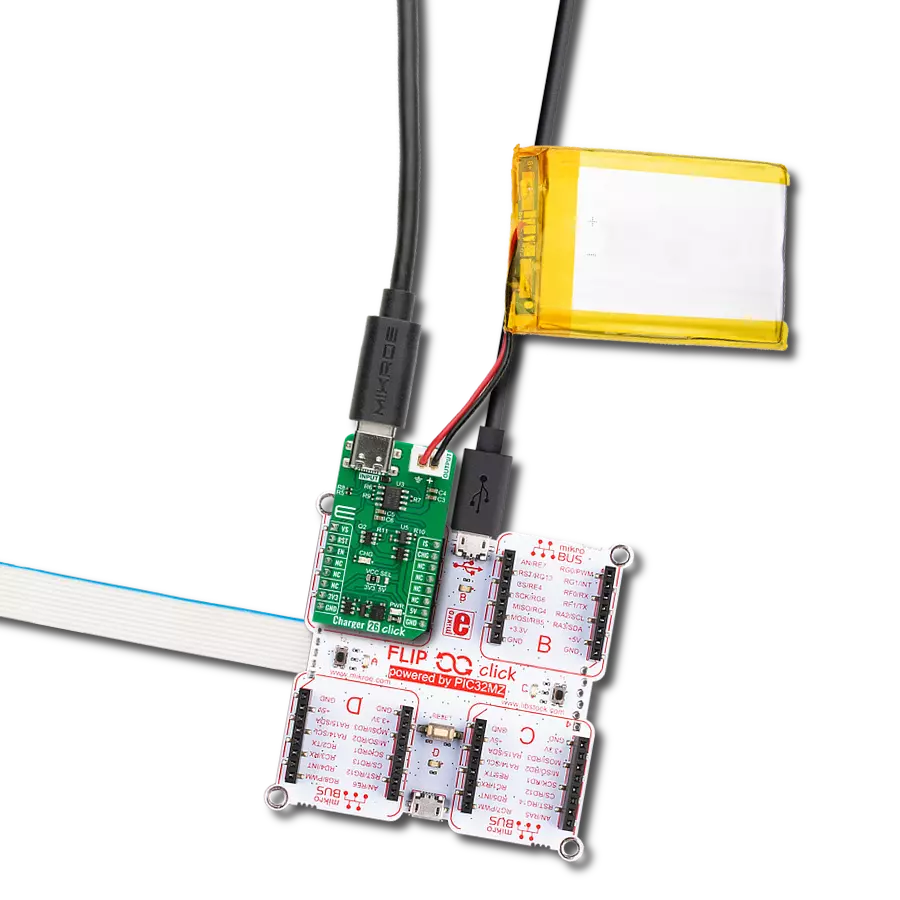USB-C Li+ battery charging with up to 3.15A and smart power routing for portable devices
A
A
Hardware Overview
How does it work?
Charger 24 Click is based on the MAX77751, a USB-C autonomous charger IC from Analog Devices for single-cell lithium-ion or lithium-polymer batteries in portable applications. This charger supports power negotiation with USB Type-C power sources through its integrated Configuration Channel (CC) detection pins, which enable automatic source identification and input current limit configuration without requiring software intervention. At its core, the MAX77751 has a synchronous switch-mode DC-DC converter capable of operating in both buck and boost modes, ensuring efficient power conversion. While in charging mode, the device operates as a buck converter, accepting input voltages from 4.3V to 13.7V and delivering up to 3.15A of current to the battery without the need for external MOSFETs. The charging current can be set between 500mA and 3.15A using an external resistor; the default 24.9kΩ resistor on Charger 24 Click provides a fast charge current of 3.15A. The Charger 24 Click is an
excellent solution for a wide range of battery-powered applications, including mobile point-of-sale terminals, wireless headphones, portable medical equipment, GPS trackers, wearable device cradles, power banks, and mobile routers. The MAX77751 also includes adaptive input current limiting (AICL), a protective feature that reduces the input current dynamically to prevent undervoltage situations when using weaker or unstable power adapters. In addition to USB-C compatibility, the IC supports BC1.2 detection through its D+ and D- pins, enabling automatic identification of legacy USB and proprietary charging sources upon insertion of the USB plug. The Charger 24 Click also features reverse-boost functionality, allowing it to supply up to 5.1V at 1.5A to external devices when the DSB pin is pulled LOW, enabling applications such as powering peripherals from the battery. For system monitoring, the board includes a red LED linked to the STA pin to indicate charging activity and a green LED on
the IOK pin to signal valid input voltage. Charging can be disabled at any time by setting the DIS pin to a HIGH logic level. Although the MAX77751 does not provide over-discharge protection, it is equipped with a SYS output that supports system powering via the integrated Smart Power Selector™. This feature prioritizes powering the system directly from the board and routes any excess power to the battery, allowing system startup even when the battery is missing or deeply discharged. It also intelligently supplements insufficient board current with power from the battery when necessary. This Click board™ can operate with either 3.3V or 5V logic voltage levels selected via the VCC SEL jumper. This way, both 3.3V and 5V capable MCUs can use the communication lines properly. Also, this Click board™ comes equipped with a library containing easy-to-use functions and an example code that can be used as a reference for further development.
Features overview
Development board
Nucleo-64 with STM32G474R MCU offers a cost-effective and adaptable platform for developers to explore new ideas and prototype their designs. This board harnesses the versatility of the STM32 microcontroller, enabling users to select the optimal balance of performance and power consumption for their projects. It accommodates the STM32 microcontroller in the LQFP64 package and includes essential components such as a user LED, which doubles as an ARDUINO® signal, alongside user and reset push-buttons, and a 32.768kHz crystal oscillator for precise timing operations. Designed with expansion and flexibility in mind, the Nucleo-64 board features an ARDUINO® Uno V3 expansion connector and ST morpho extension pin
headers, granting complete access to the STM32's I/Os for comprehensive project integration. Power supply options are adaptable, supporting ST-LINK USB VBUS or external power sources, ensuring adaptability in various development environments. The board also has an on-board ST-LINK debugger/programmer with USB re-enumeration capability, simplifying the programming and debugging process. Moreover, the board is designed to simplify advanced development with its external SMPS for efficient Vcore logic supply, support for USB Device full speed or USB SNK/UFP full speed, and built-in cryptographic features, enhancing both the power efficiency and security of projects. Additional connectivity is
provided through dedicated connectors for external SMPS experimentation, a USB connector for the ST-LINK, and a MIPI® debug connector, expanding the possibilities for hardware interfacing and experimentation. Developers will find extensive support through comprehensive free software libraries and examples, courtesy of the STM32Cube MCU Package. This, combined with compatibility with a wide array of Integrated Development Environments (IDEs), including IAR Embedded Workbench®, MDK-ARM, and STM32CubeIDE, ensures a smooth and efficient development experience, allowing users to fully leverage the capabilities of the Nucleo-64 board in their projects.
Microcontroller Overview
MCU Card / MCU
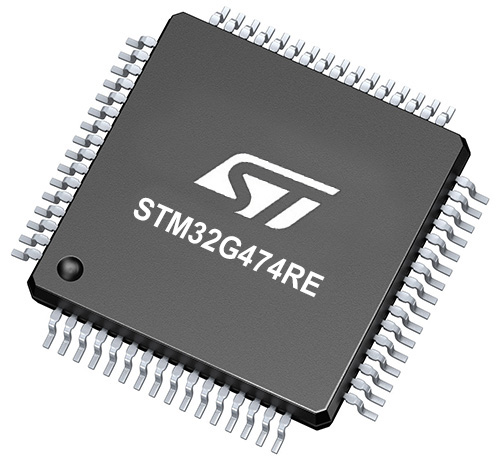
Architecture
ARM Cortex-M4
MCU Memory (KB)
512
Silicon Vendor
STMicroelectronics
Pin count
64
RAM (Bytes)
128k
You complete me!
Accessories
Click Shield for Nucleo-64 comes equipped with two proprietary mikroBUS™ sockets, allowing all the Click board™ devices to be interfaced with the STM32 Nucleo-64 board with no effort. This way, Mikroe allows its users to add any functionality from our ever-growing range of Click boards™, such as WiFi, GSM, GPS, Bluetooth, ZigBee, environmental sensors, LEDs, speech recognition, motor control, movement sensors, and many more. More than 1537 Click boards™, which can be stacked and integrated, are at your disposal. The STM32 Nucleo-64 boards are based on the microcontrollers in 64-pin packages, a 32-bit MCU with an ARM Cortex M4 processor operating at 84MHz, 512Kb Flash, and 96KB SRAM, divided into two regions where the top section represents the ST-Link/V2 debugger and programmer while the bottom section of the board is an actual development board. These boards are controlled and powered conveniently through a USB connection to program and efficiently debug the Nucleo-64 board out of the box, with an additional USB cable connected to the USB mini port on the board. Most of the STM32 microcontroller pins are brought to the IO pins on the left and right edge of the board, which are then connected to two existing mikroBUS™ sockets. This Click Shield also has several switches that perform functions such as selecting the logic levels of analog signals on mikroBUS™ sockets and selecting logic voltage levels of the mikroBUS™ sockets themselves. Besides, the user is offered the possibility of using any Click board™ with the help of existing bidirectional level-shifting voltage translators, regardless of whether the Click board™ operates at a 3.3V or 5V logic voltage level. Once you connect the STM32 Nucleo-64 board with our Click Shield for Nucleo-64, you can access hundreds of Click boards™, working with 3.3V or 5V logic voltage levels.
Li-Polymer Battery is a reliable power solution designed to provide stable and long-lasting energy for portable and autonomous devices. With a rated voltage of 3.7V and an impressive 6000mAh capacity, it ensures extended operation time for applications that demand mobility without compromising performance. This battery is equipped with a standard connector fully compatible with mikromedia boards, allowing easy integration into your development or end-use systems. Its compact form factor (67 x 99 x 8.1mm) makes it ideal for space-constrained designs while still delivering a high energy density. Engineered for stable operation, it offers a smooth performance curve across usage cycles, making it suitable for both prototyping and commercial applications. To guarantee the battery arrives in perfect condition, it is shipped in secure, custom-designed packaging. Whether you're powering handheld devices, wearables, or mobile embedded systems, this Li-Polymer Battery provides a dependable and efficient energy source for your next innovation.
This is a USB 3.1 cable with USB Type C male connectors on both sides. Cable comes with USB Type C Female to USB Type A Male adapter, making it compabitle with USB 2.0 and USB 3.0 host slots as well. Cable is 1.5 meters long and compatible with any USB type C development tools.
Used MCU Pins
mikroBUS™ mapper
Take a closer look
Click board™ Schematic
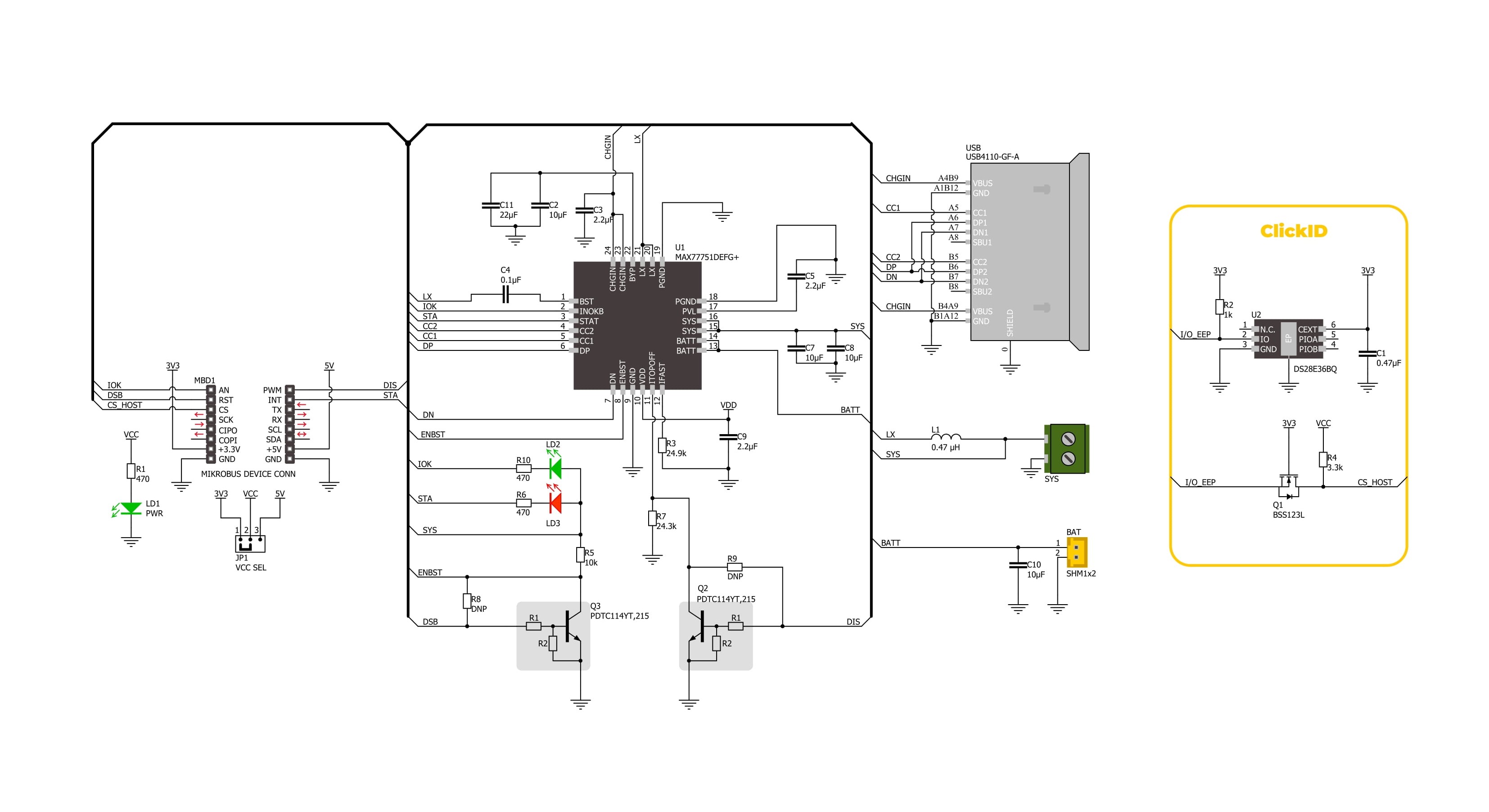
Step by step
Project assembly
Software Support
Library Description
Charger 24 Click demo application is developed using the NECTO Studio, ensuring compatibility with mikroSDK's open-source libraries and tools. Designed for plug-and-play implementation and testing, the demo is fully compatible with all development, starter, and mikromedia boards featuring a mikroBUS™ socket.
Example Description
This example demonstrates the use of the Charger 24 Click board. The application initializes the device, enables battery charging, and continuously monitors the charging and USB power status. It displays whether the battery is currently charging, fully charged, or if no input is detected, as well as whether the USB power is valid.
Key functions:
charger24_cfg_setup- Examplecharger24_init- Examplecharger24_enable_charging- Examplecharger24_get_iok_pin- Examplecharger24_get_status- Example
Application Init
Initializes the logger and the Charger 24 Click driver and enables charging while disabling boost mode.
Application Task
Periodically reads and logs the charging and USB power status.
Open Source
Code example
The complete application code and a ready-to-use project are available through the NECTO Studio Package Manager for direct installation in the NECTO Studio. The application code can also be found on the MIKROE GitHub account.
/*!
* @file main.c
* @brief Charger 24 Click example
*
* # Description
* This example demonstrates the use of the Charger 24 Click board. The application
* initializes the device, enables battery charging, and continuously monitors the
* charging and USB power status. It displays whether the battery is currently
* charging, fully charged, or if no input is detected, as well as whether the USB
* power is valid.
*
* The demo application is composed of two sections:
*
* ## Application Init
* Initializes the logger and the Charger 24 Click driver and enables charging while disabling boost mode.
*
* ## Application Task
* Periodically reads and logs the charging and USB power status.
*
* @note
* Ensure a valid USB input source and battery are connected to observe status transitions.
*
* @author Stefan Filipovic
*
*/
#include "board.h"
#include "log.h"
#include "charger24.h"
static charger24_t charger24; /**< Charger 24 Click driver object. */
static log_t logger; /**< Logger object. */
void application_init ( void )
{
log_cfg_t log_cfg; /**< Logger config object. */
charger24_cfg_t charger24_cfg; /**< Click config object. */
/**
* Logger initialization.
* Default baud rate: 115200
* Default log level: LOG_LEVEL_DEBUG
* @note If USB_UART_RX and USB_UART_TX
* are defined as HAL_PIN_NC, you will
* need to define them manually for log to work.
* See @b LOG_MAP_USB_UART macro definition for detailed explanation.
*/
LOG_MAP_USB_UART( log_cfg );
log_init( &logger, &log_cfg );
log_info( &logger, " Application Init " );
// Click initialization.
charger24_cfg_setup( &charger24_cfg );
CHARGER24_MAP_MIKROBUS( charger24_cfg, MIKROBUS_1 );
if ( DIGITAL_OUT_UNSUPPORTED_PIN == charger24_init( &charger24, &charger24_cfg ) )
{
log_error( &logger, " Communication init." );
for ( ; ; );
}
charger24_disable_boost ( &charger24 );
charger24_enable_charging ( &charger24 );
log_info( &logger, " Application Task " );
}
void application_task ( void )
{
uint8_t status = charger24_get_status ( &charger24 );
log_printf( &logger, "\r\n Charging status: " );
switch ( status )
{
case CHARGER24_STATE_NO_INPUT:
{
log_printf( &logger, "No input or fault\r\n" );
break;
}
case CHARGER24_STATE_CHARGING:
{
log_printf( &logger, "Trickle, precharge, fast charge\r\n" );
break;
}
case CHARGER24_STATE_CHARGE_DONE:
{
log_printf( &logger, "Top-off and done\r\n" );
break;
}
default:
{
log_printf( &logger, "Unknown\r\n" );
break;
}
}
log_printf( &logger, " USB status: " );
if ( charger24_get_iok_pin( &charger24 ) )
{
log_printf( &logger, "No power\r\n" );
}
else
{
log_printf( &logger, "Power good\r\n" );
}
}
int main ( void )
{
/* Do not remove this line or clock might not be set correctly. */
#ifdef PREINIT_SUPPORTED
preinit();
#endif
application_init( );
for ( ; ; )
{
application_task( );
}
return 0;
}
// ------------------------------------------------------------------------ END
Additional Support
Resources
Category:Battery charger
